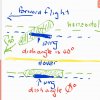AlanTheBeast
Well-Known Member
According to the article linked here Putting Wings or Winglets on a Mavic? airfoil arms reduced drag by 60%, so I guess the answer would be 'all of the above.'
The way those winglets are designed would be more effective at low speeds - which likely suits the mission of that drone. Further the increase in endurance also includes improvements from reduced weight.
While such arm shapes would be an improvement for Mavic, the afore mentioned drag when the MP is in forward flight, nose down, is really where there is huge drag penalty for the Mavic. Such arms would also have been an unwelcome packaging challenge for what the MP engineers were tasked to do: make a compact folding drone for US$999 retail.













